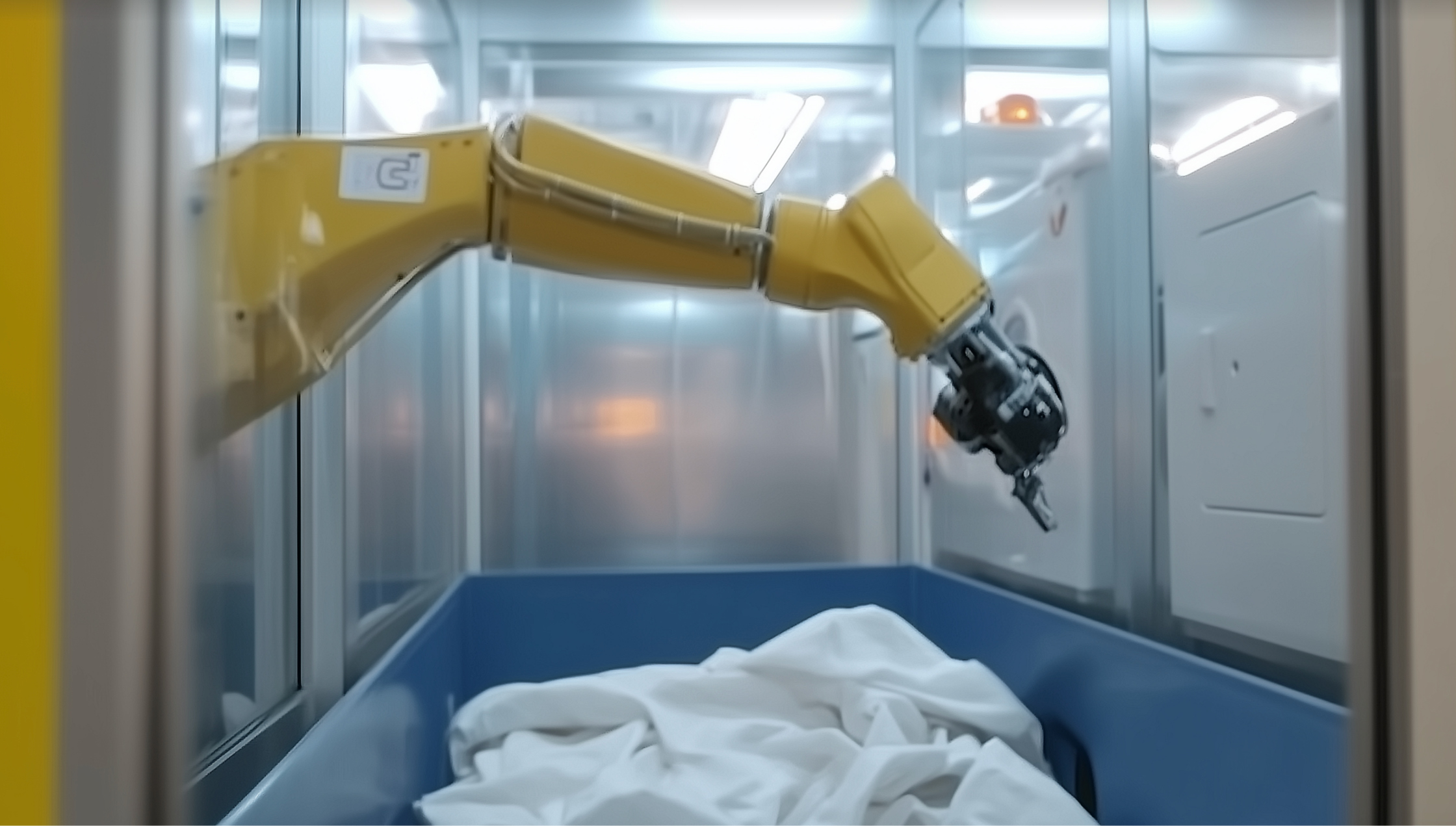The potential for AI to reshape the textile care industry is as exciting as it is thought-provoking.

For many of us, the thought of AI, robotics and a shift toward autonomous automation might feel like an episode of The Jetsons, but this is very real – and it’s on the horizon. Welcome to the future!
What does the rise of AI mean for the people behind the machines?
AI as a tool, not a threat
First and foremost, AI automation should be seen as enhancing worker roles, not replacing them. AI tools have the capability to take over repetitive tasks like sorting, loading, ironing, and folding, freeing employees to focus on more strategic, value-adding work.
Redefining skills and roles
As the workforce adapts to AI integration, the demand for new skill sets will rise. Instead of manual labour, employees will be tasked with managing, interpreting and fine-tuning AI-driven systems to meet the daily demands of laundry operations.
Training and transition
One of the most pressing issues in the global textile care industry is a shortage of staff, especially for manual roles – something frequently discussed at the Texcare International Conference. If AI can handle these tasks, the workforce could be re-skilled and up-skilled to adapt to the evolving tech landscape, integrating with AI in ways that enhance rather than displace human roles.
How can AI systems enhance – not replace – human skill in textile care?
Precision and efficiency
AI can analyse data across washing machines, dryers, finishing lines, inventory control, dispatch and transport, ensuring optimal performance in each area. This not only reduces wear on machines, lowers energy consumption and maintains high-quality results but also, combined with human oversight, drives facility-wide efficiency.
Predictive maintenance
AI systems can monitor equipment health in real time, predicting malfunctions before they happen. This minimises downtime, reduces repair costs and helps schedule preventive maintenance, leading to smoother and more optimised operations.
Customer experience enhancement
Elements of AI are not entirely new to textile care – RFID technology, for instance, has long been a part of the industry. AI can now further enhance the customer experience, from improved tracking of laundry orders to faster response times and personalised service offerings, making interactions more efficient and tailored.
AI and sustainability
AI integration in textile care isn’t only about productivity – it’s also a path to greater sustainability. By optimising energy use, water consumption and chemical applications, AI can make operations greener and more environmentally responsible.
The road ahead: where we see the textile care industry heading
Smarter facilities
Imagine a future where textile care facilities operate autonomously, with AI continuously managing inventory and workflow, and predicting peak demand. The capability to sort, wash, finish and pack orders ready for the next day will help facilities deliver on time, in full. This evolution promises cost savings and increased efficiencies across many business areas.
Collaboration over competition
AI is a collaborative tool. The best results will come from humans and AI systems working together, each contributing their unique strengths – AI handling data-heavy, repetitive tasks, and humans focusing on creative problem-solving, customer relationships and specialised services that require a human touch.
A future we shape together
The textile care industry has gradually incorporated AI-driven technology over the years, from bag rail systems and eco-friendly washers and dryers to systems that deliver freshly finished linen directly to hospital wards. These innovations make work easier, empower the workforce and ultimately help drive the industry forward.
By embracing AI not merely as a tool for automation, but as a vehicle to enhance human expertise and experiences, the textile care industry can improve work-life balance, enabling us all to live and work in ways that are more efficient, sustainable and smarter.
By Brad Carruthers
